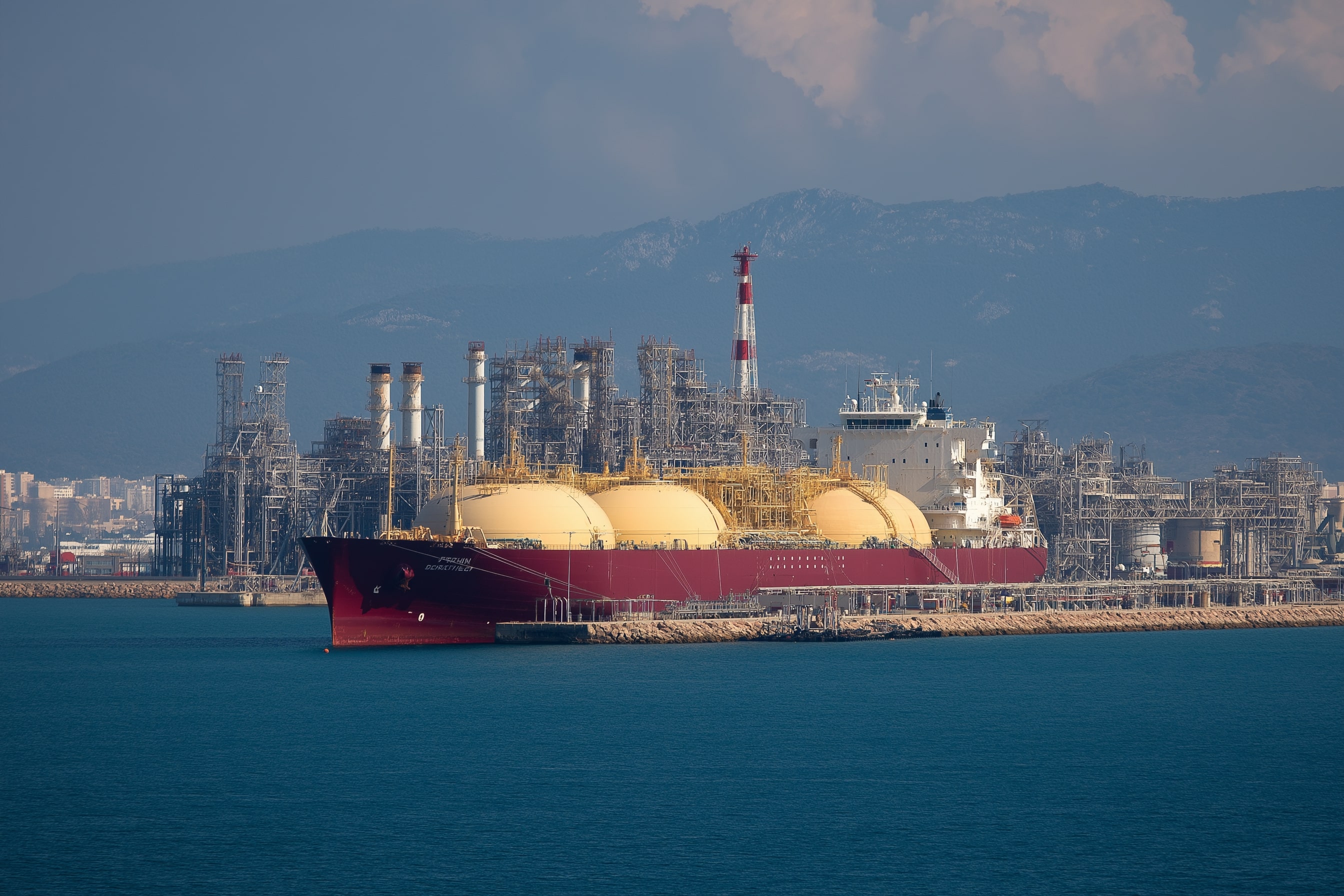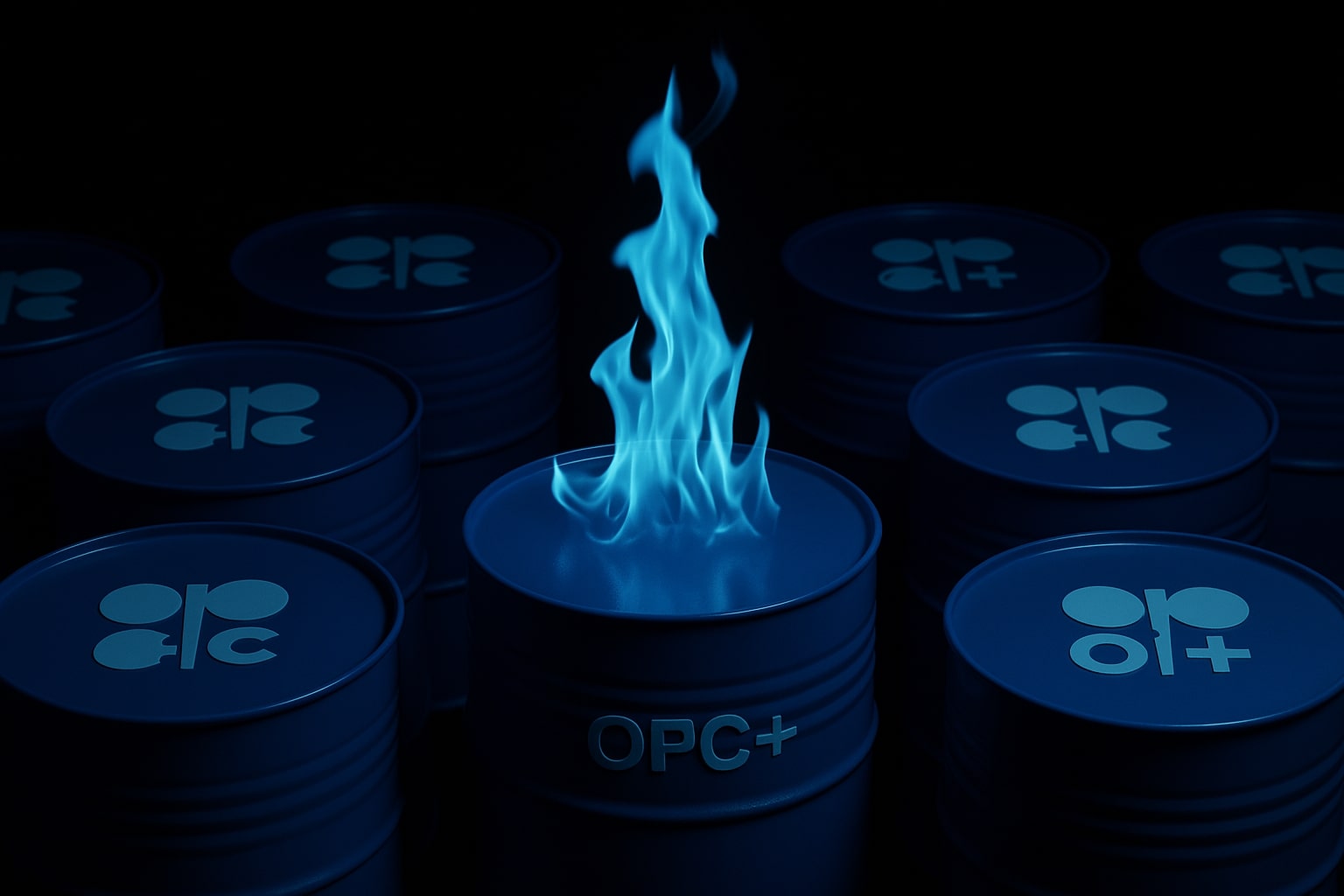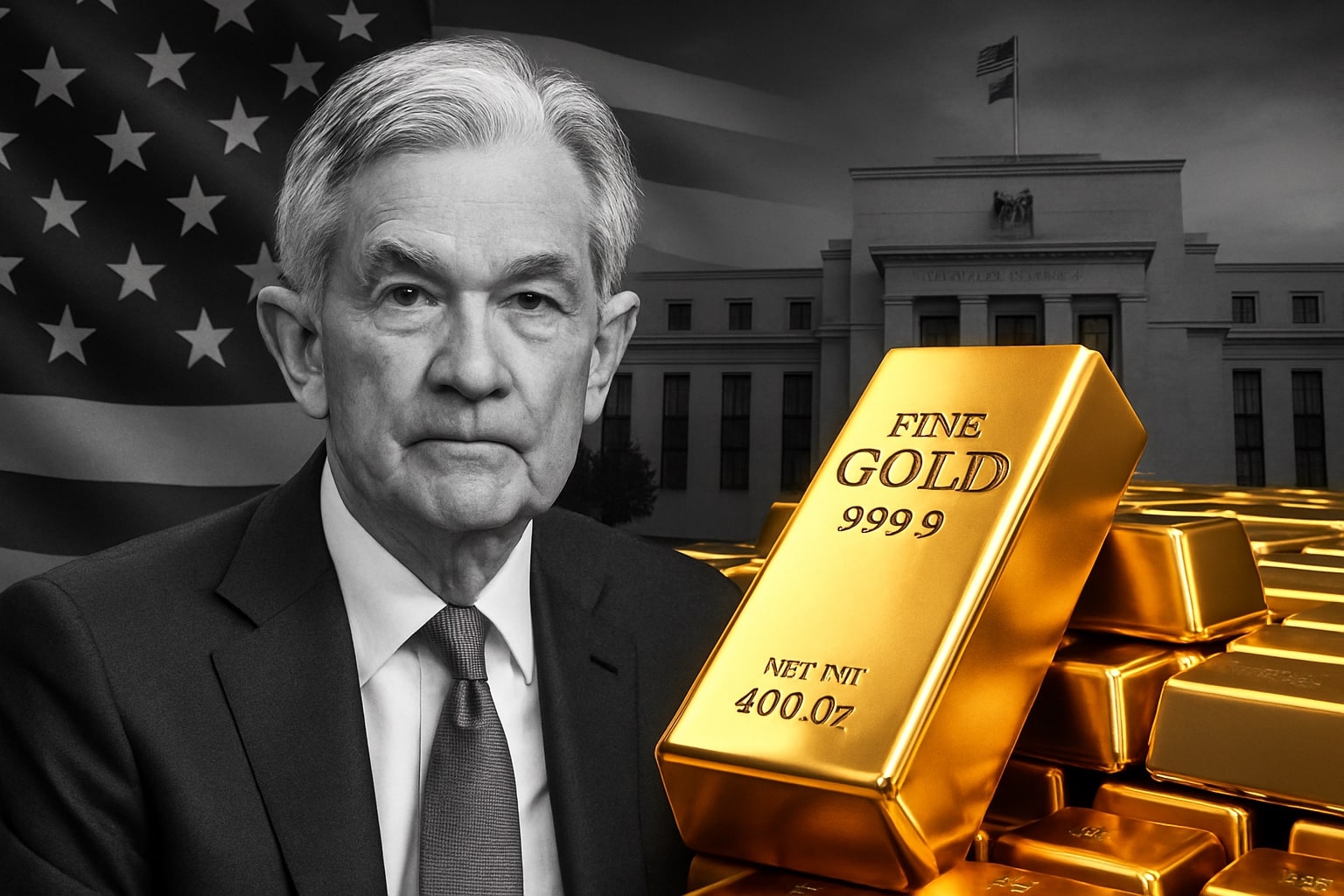
Natural Gas Price (NG=F) Steadies at $4.53 as Record U.S. Output Offsets Global Winter Demand Surge
Henry Hub gas hovers near $4.53/MMBtu as production reaches 110 Bcf/d, U.S. LNG exports hit record highs, and European TTF collapses below €30/MWh | That's TradingNEWS
Natural Gas (NG=F) Balances on Tight Supply and Winter Risk as Prices Hover Near $4.53
Winter Volatility Takes Hold Across Global Gas Markets
Natural gas markets are entering the most volatile phase of 2025 as traders balance record U.S. output against rising heating demand and shifting geopolitical expectations. The U.S. benchmark Henry Hub (NG=F) settled near $4.535 per MMBtu, down 0.98%, after briefly testing $4.75 earlier in the session. Futures for December delivery closed at $4.549, reflecting traders’ caution ahead of the winter season. Despite short-term pullbacks, the market continues to exhibit structural bullishness driven by colder weather forecasts, record LNG flows, and thin inventories in parts of Europe and Asia.
U.S. Production Peaks at Record Levels While Storage Tightens
Domestic production has reached a new record above 110 Bcf per day, yet the margin between supply and demand is narrowing rapidly. Weekly EIA data shows storage at 3.83 trillion cubic feet, approximately 2.1% below last year’s level. The deficit is small but significant when combined with sustained exports. Feedgas deliveries to LNG facilities surpassed 14 Bcf per day in November, an all-time high, with utilization rates near capacity. Facilities along the Gulf Coast are running at full throttle as European and Asian buyers secure cargoes early. The U.S. now accounts for over 25% of global LNG supply, and this export strength continues to anchor higher floor prices at Henry Hub even when domestic inventories appear sufficient.
European Benchmarks Drop Below €30 as Peace Talks Weigh on Risk Premiums
In contrast to the U.S. market’s resilience, Europe’s TTF benchmark fell below €30/MWh ($34.36) for the first time since May 2024, pressured by abundant LNG inflows and warmer weather forecasts. Storage across the EU sits around 79% full, compared with 95% a year ago, while gas withdrawals have begun earlier than usual. Despite lower stocks, traders remain confident due to high import capacity and reduced competition from Asia, where prices have normalized near $10/MMBtu. The prospect of progress in Ukraine–Russia peace negotiations has further reduced geopolitical premiums. Markets now factor in limited disruption risk, with Russian pipeline deliveries to Europe still representing roughly 12% of total imports—small but symbolically stabilizing. This calm, however, could vanish if diplomatic momentum fades or if temperatures turn sharply colder in late December.
LNG Freight Rates and Infrastructure Constraints Add Layer of Volatility
Freight markets illustrate the divergence between Atlantic and Pacific dynamics. Charter rates for 174k XDF/MEGI LNG carriers stand at $160,000 per day in the West versus $78,000 in the East, according to Fearnleys data. The widening gap reflects surging trans-Atlantic demand as European terminals receive record cargoes. Despite this logistical success, bottlenecks at major Gulf export points are constraining flexibility. The Eiger Express pipeline expansion from the Permian Basin to the Katy Hub, announced by WhiteWater Development, aims to relieve part of the congestion by mid-2026. Until then, producers face a paradox: record output but limited capacity to move gas efficiently to coastal liquefaction plants, creating localized price dislocations across the U.S. network.
Weather Patterns Reinforce the Bullish Seasonal Setup
Meteorological data continues to shape sentiment. U.S. models project a colder-than-average December across the Midwest and Northeast, adding an estimated 1.6 Bcf per day in incremental residential and commercial demand. In Europe, early forecasts of mild weather moderated prices, but longer-range projections from ECMWF now signal a late-winter cold front extending into February. This uncertainty keeps winter risk premiums justified. The market’s intraday reactions to weather updates have been immediate—swings of $0.20–$0.30/MMBtu within hours, underscoring how reactive traders have become to temperature models. Every downward revision in degree days triggers fresh buying, even as speculators trim exposure after sharp rallies.
Technical Structure Suggests Short-Term Resistance, Long-Term Accumulation
From a technical perspective, NG=F faces heavy resistance at $4.75, aligning with the upper end of its short-term trading channel. The support zone rests between $4.20 and $4.25, with secondary support near $3.85, coinciding with the 50-day exponential moving average. Momentum indicators remain constructive: the RSI sits at 62, showing moderate bullish strength without overextension, while MACD trends positive, suggesting potential continuation toward $4.90–$5.18 if bullish momentum accelerates. Stochastic oscillators recently exited oversold territory, confirming that buyers continue to defend dips aggressively. Intraday traders are buying pullbacks around $4.25 with tight stops, anticipating seasonal demand to provide a floor through early January.
Global Demand Divergence and the Role of Asian Buyers
While Europe has enjoyed mild weather, Asia remains a critical driver for global gas balance. Japan and South Korea continue steady procurement, but China’s spot purchases have been cautious, keeping JKM prices contained. However, industrial restarts in India and Southeast Asia are expected to lift LNG imports by 1.8 million tonnes per month through Q1 2026. If Asian demand expands faster than expected, it will divert U.S. cargoes eastward, tightening supply for Atlantic buyers and lifting Henry Hub basis spreads. Market participants remember the 2022–23 pattern, when similar conditions triggered a 40% rally in NG=F within six weeks. That historical analog underlines why speculators remain reluctant to short despite recent volatility
Read More
-
MSTY ETF Collapses to $6.94 as Microstrategy (MSTR) Stock $543-to-$172 Crash and Bitcoin’s $85K Slide Trigger Yield Trap
25.11.2025 · TradingNEWS ArchiveStocks
-
Bitcoin ETF Outflows Reach $151M Amid Rotation to Ethereum, Solana, and XRP ETFs
25.11.2025 · TradingNEWS ArchiveCrypto
-
Natural Gas Price (NG=F) Drops to $4.39 as Record Output and Global LNG Flood Weigh on Futures
25.11.2025 · TradingNEWS ArchiveCommodities
-
USD/JPY Price Forecast - Dollar to Yen Drops to 156.05 as Weak U.S. Data Shake Dollar Strength
25.11.2025 · TradingNEWS ArchiveForex
Macro Correlations with Energy Equities and Inflation
Natural gas now trades as both an energy commodity and an inflation hedge. The S&P GSCI Natural Gas Index has risen 17% over the past two months, outpacing oil and coal benchmarks. Gas-linked equities such as Cheniere Energy (NYSE:LNG) and EQT Corporation (NYSE:EQT) have gained 12.5% and 9.7% respectively in November, reflecting investor rotation back into energy yield plays. The broader macro context—expectations of a Federal Reserve rate cut in December—supports commodity exposure by weakening the dollar index below 97.5, reducing the cost of U.S. exports. Lower borrowing costs also enhance capital flows into infrastructure projects, reinforcing long-term supply expansion themes. Still, if the Fed delays easing or inflation surprises higher, volatility could return as margin pressures build in energy-intensive industries.
European Policy and the Shadow of Sanctions
European policymakers continue to debate the balance between sanctions enforcement and energy security. Discussions within the EU Council on easing restrictions tied to the Ukraine peace process have indirectly supported stability in gas supply. The European Commission recently signaled flexibility in maintaining limited Russian inflows through TurkStream and LNG transshipments via third countries. Analysts estimate that even modest sanction relief could free 4–5 Bcf per day of Russian pipeline capacity, lowering import costs and dampening speculative risk premiums. Yet this balance is politically fragile—any reversal of the peace framework or escalation on the frontlines would instantly reverse sentiment and send TTF futures surging back toward €45.
Short-Term Trading Strategy and Outlook
Short-term traders face a market that remains choppy but fundamentally tight. The preferred strategy among professionals involves scaling into long positions near $4.25–$4.30, targeting $4.90–$5.20, with stops below $4.00. Seasonality favors upside into late December as storage draws accelerate and weather risk intensifies. Institutional flow data from CME shows a steady build in open interest, up 6.4% week-on-week, primarily driven by commercial hedgers increasing long exposure. Meanwhile, retail sentiment remains cautious after the recent 33% rally in October. This divergence often precedes another leg higher once speculative shorts are squeezed out.
Long-Term Fundamentals Point Toward Gradual Tightness
Beyond winter volatility, structural factors point to a medium-term tightening of global balances. Global LNG demand is expected to rise 4.8% annually through 2027, while liquefaction capacity additions lag behind. U.S. expansions like Rio Grande LNG Phase II and Driftwood LNG remain in construction, but most capacity won’t be operational until late 2026. Europe’s accelerated buildout of regasification terminals—particularly in Germany and the Netherlands—will sustain import dependency on U.S. cargoes. Meanwhile, domestic shale gas producers face plateauing productivity gains, especially in the Marcellus and Haynesville basins, where environmental constraints and pipeline limitations curb further growth. These dynamics suggest that sub-$4 prices will be unsustainable once post-winter inventories tighten.
Final Assessment — Natural Gas (NG=F): Buy with Seasonal Bullish Bias
The balance of data favors a bullish outlook through Q1 2026. Fundamentals—tight storage, record exports, and strong winter demand—align with technical momentum around the $4.50 pivot. Resistance at $4.75 remains critical, but a confirmed breakout could extend gains toward $5.10–$5.25. Given the macro backdrop of easing monetary policy and stable LNG flows, downside risk below $4.00 appears limited. The strategic rating: Buy, with exposure scaled on dips ahead of expected February cold and further European restocking. Natural gas remains the most seasonally charged and geopolitically sensitive commodity heading into 2026, and traders positioned early in this tightening cycle stand to benefit most.



















